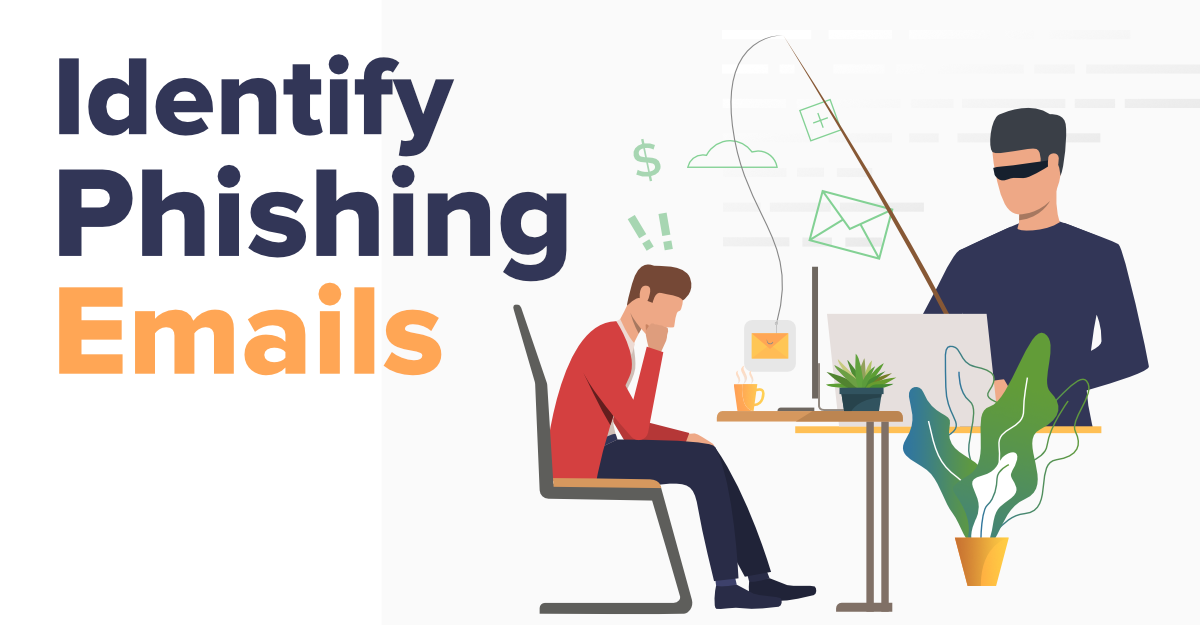10 Tips To Identify Phishing Emails
Last Updated :
11 May, 2020
Phishing is one of the longstanding and dangerous methods of cybercrime. But do you know how to spot a phishing email? How to protect yourself from Phishing Attacks? What to do if you responded to a Phishing Email? And How to Report Phishing?

In this article, we will be discussing different ways or we can say we will share some tips with examples on how to determine whether an email received is a legit one or just a part of a phishing attack. Phishing is a way hackers use to con you to provide your personal information or account details. Once information is obtained, hackers will either install the malware in your computer or create new user credentials to steal sensitive data.
Scammers use text messages or email to trick you into giving them your personal information. Scammers launch thousands of such attacks every day and let me tell you they are often successful. All you need is the presence of mind and some understanding of hints to look for to escape such attacks. Let’s get started with the 10 tips to identify Phishing Emails:
1. The Message is From Public Domain
No legitimate organization will send email using a public domain like email ending with @gmail.com. Every organization will have its email domain and company accounts except independent workers.
The best way to find out the organization’s domain name is to type the company’s name into a search engine.
2. Display Name can be Fake
Many of us don’t ever look at the email address that a message has come from. When crooks create a bogus email address they select a display name, which doesn’t have to relate to the email address at all.
Therefore, in this way, they can send you an email with a bogus email address and display name Google.
Criminals these days are very smart. They don’t rely on the victim’s ignorance. Rather they will use spoofed organization’s name in the local part of the email address. For example: PayPal@abc.com. If you don’t pay attention to @abc.com, you will believe that the mail is from the official PayPal employee.
3. Misspelled Domain Names
There is another clue hidden in the domain names, that can help you identify the phishing scams. There are plenty of ways to create addresses that are indistinguishable from the ones that are being spoofed. For example, a hacker will buy a domain name gimletrnedia.com to act as an imposter for gimletmedia.com. Can you notice: instead of m there is a rn in the scam domain.
The majority of the users don’t check the spelling of the domain names and believe in the otherwise perfectly fine looking email.
4. Spelling Mistakes are Unforgivable
No brand or organization will risk making a brand impression with spelling errors. Do you ever think why they risk their plan with such poorly written emails? The answer is very simple, they are not good at writing.
Remember many of the scammers are from non-English speaking countries and from backgrounds where they have limited access to resources to learn the language. With this information in mind, it is very easy to spot the difference between a typo made by a legitimate sender and a scam.
5. Addressed to “Valued Customer”?
These days Personalization is being taken seriously by many brands. They try to incorporate personalization into their emails to better connect with their customers. If you receive an email that is addressed to a Valued Customer rather than being addressed to you by your name, you know you have received a scam email.
6. Urgent Emails are Threat
A legitimate email from a legitimate brand will always sound humble. Why would a brand create a sense of urgency or fear? If you receive an email with a subject line that invokes a sense of urgency. BEWARE!!!
7. Lookout For the Signature
Legitimate brands or organizations will always include their name and contact details in the signature section. if you come across an email with a weird signature or signature without proper contact details, then it is a phishing email.
8. Review Before You Click Attachments
Do not ever click on attachments that you don’t expect to receive or about which you have no idea. First try to analyze the email details like email address, domain name, grammatical errors in the email body. If everything is fine, only then go for an attachment download.
9. Everything You See is Not Real
Sometimes, in the worst-case scenario, everything may look fine like the email address, domain name, or the email body-but they may not be legitimate. Having a skeptical approach towards the unknown emails is better and safe than be sorry later.
10. Browse the Internet from Anti-Phishing Enabled Browser
The Last thing which we could suggest you protect from phishing attacks is to open the links from the emails into browsers which have built-in support to alert you about phishing emails. For example- Google Chrome, Safari, Internet Explorer, Mozilla Firefox.
Like Article
Suggest improvement
Share your thoughts in the comments
Please Login to comment...